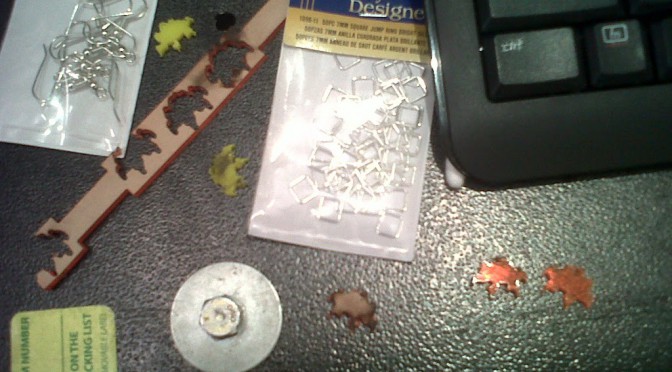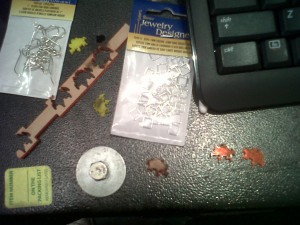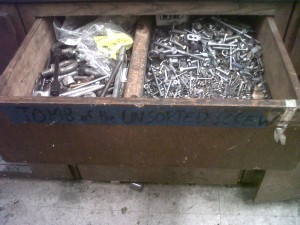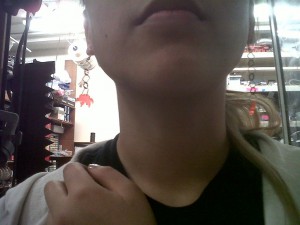i borrowed an instrument for the summer from Nick
it’s tuned like the ukulele (well, with low-G / low-4th/ linear tuning instead of the standard reentrant C tuning)
and here are some of the resources I’ve been using to learn ukulele. I have some advantage in that I already know how to read sheet music, play piano so I can play strange rhythms, and also got some tips from Nick introducing me to things like what are picking patterns and hammer on / pull offs. but essentially i’m a complete beginner.
top 100 ukulele sites: http://www.topukulelesites.com/
well-done online tuner: http://www.get-tuned.com/online_ukulele_tuner.php
excellent video course: http://ukuleleunderground.com/courses/beginner/ includes “ukulele minutes”, short videos for when I’m feeling scatterbrained
excellent pdf and other resources: http://ukulelehunt.com/2010/02/24/beginner-ukulele-lessons/
more resources, these tend to be videos: http://www.ukuleletricks.com/ukulele-lessons/
This video was excellent (“in 10 minutes”):
https://www.youtube.com/watch?v=APYXhN8yUg0
[Edit 12 Jun 2013] Another excellent site: http://www.ezfolk.com/uke/index.html
Then for some tabs:
Excellent stairway to heaven tab: http://ukutabs.com/l/led-zeppelin/stairway-to-heaven/
The only other full tab I found on that site, but I don’t recognize the song, is Blackbird: http://ukutabs.com/t/blackbird/
Folk music tabs: http://www.kenmiddleton.co.uk/Pages/FreeTabDownloads.aspx
(from: http://www.ukuleleunderground.com/forum/showthread.php?38750-Folk-music-on-a-ukulele)
Canon in C: http://www.songsterr.com/a/wsa/mrpook-canon-in-c-ukulele-easy-tab-s91563t0
and others here: http://www.songsterr.com/a/wa/search?pattern=ukulele
including the crazy while my guitar gently weeps:
http://www.songsterr.com/a/wsa/jake-shimabukuro-while-my-guitar-gently-weeps-ukulele-fingerstyle-with-intro-like-in-sungha-jung-2006-version-tab-s381032t0
that is apparently a “rite of passage” for ukulele players
easier but still beyond my current skill level: http://www.songsterr.com/a/wsa/mrpook-kiss-the-rain-ukulele-tab-s381443t0
low G tabs: http://pdfminstrel.wordpress.com/2-standard-high-g-ukulele-pdfs/low-g-ukulele-tabs-3/
I don’t really get the “tabs” that only have chords. Am I supposed to sing the song and strum the chords? =__= I suspect that’s what’s expected, but I’m not much of a singer and I don’t know many songs well enough to sing their melodies.
Ukulele underground also does play along videos:
https://www.youtube.com/watch?v=GTFRfFKBl2U
And some inspirational videos:
Let’s Dance (bukuro) https://www.youtube.com/watch?v=ZqaYmQZgrB4
I’m Yours (Sungha Jung) https://www.youtube.com/watch?v=E2OEuyF_2u8
and the classic, While My Guitar Gently Weeps (bukuro again) https://www.youtube.com/watch?v=puSkP3uym5k
Hrm, in the meantime, a gazillion projects. More later…
=====
Notes to self
=====
http://www.kenmiddleton.co.uk/Pages/FreeTabDownloads.aspx
Arkansas Traveler
http://www.youtube.com/watch?v=U5JP0LsH76Q
wut. in this version this guy is playing the harmonica and strumming the ukulele at the same time
http://www.youtube.com/watch?v=2qaK5WishAA
Ashokan Farewell (difficult)
http://www.youtube.com/watch?v=Nr-ddFZVrtE
Concertina Reel
http://www.youtube.com/watch?v=YJL7GFHJpcA
Down by the Salley Gardens
http://www.youtube.com/watch?v=-al5oqt3nyM
Fanny Power
http://www.youtube.com/watch?v=dlNx_POdIms
(campanella? http://ukulelehunt.com/2010/03/31/campanella-ukulele/)
On the issue of linear (what I have, low-G) versus reentrant tuning:
http://www.ukuleleunderground.com/forum/archive/index.php/t-52942.html?s=08b159867035343637fc184b0323f4d6
” Songs written for ukulele, especially the early classics from the 20s and 30s nearly always sound better on a reentrant uke. So do bluegrass songs when strummed. Songs written for guitar, rock, blues, etc seem to sound best when played with a low G uke.”
“Check out Herb Ohta Jr. if you’re looking for a specific artist. He’s the top dog when it comes to plain, beautiful low-g ‘ukulele work. Something like his “Sand Castles” is a brilliant piece.”
More tabs:
http://www.chiefnoda.com/ukulele/ has low-G pieces
=====
Bookmarks of what I’m learning next:
=====
http://ukulelehunt.com/2008/10/22/ukulele-strumming/
http://ukuleleunderground.com/lessons/how-to-switch-chords/




